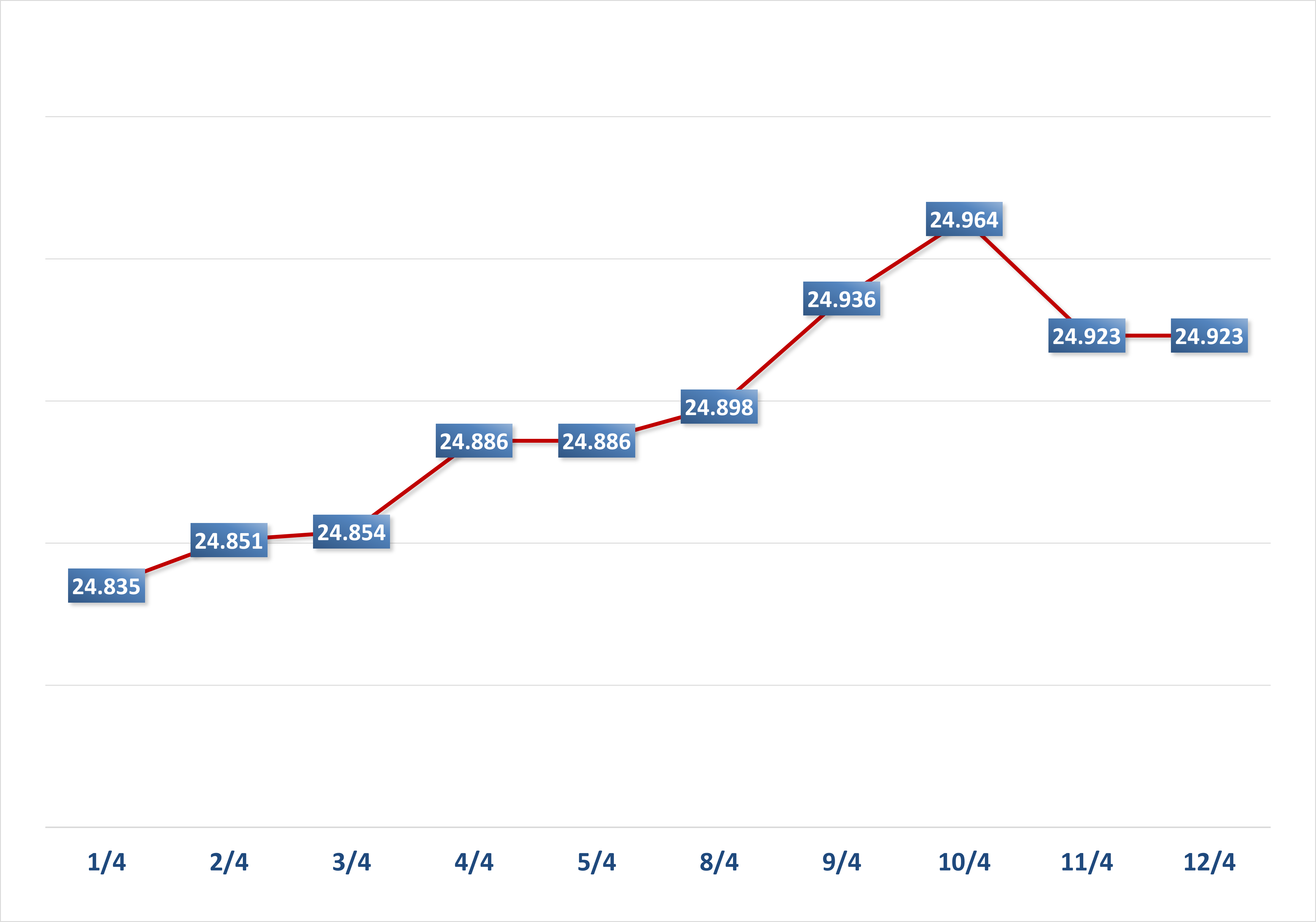
Chairman of Vietnam Association of Small and Medium Enterprises Nguyen Van Than.
In an interview with the Government Electronic Newspaper, Mr. Nguyen Van Than - Chairman of the Vietnam Association of Small and Medium Enterprises emphasized that Directive No. 10/CT-TTg on private economic development is a clear demonstration of the Government's special and timely attention in creating new momentum for the private enterprise sector, especially small and medium enterprises.
Sir, how do you evaluate Directive No. 10/CT-TTg issued on March 25, 2025 in the current context?
Mr. Nguyen Van Than: Currently, small and medium enterprises account for more than 97% of the total number of enterprises in Vietnam, which means they have a great advantage in terms of quantity, flexibility and adaptability. But on the contrary, this is also the weakest sector in the value chain, especially when participating in production and business linkages with FDI enterprises, large domestic enterprises or when entering the international market. Limitations in capital scale, technology, management level, human resource quality... make them vulnerable in a fiercely competitive environment.
In that context, I believe that Directive No. 10/CT-TTg of the Prime Minister was issued at the right time, demonstrating the deep concern and support of the Party and State for the private economic sector - especially the small and medium-sized enterprise (SME) community.
At the same time, Directive 10/CT-TTg clearly demonstrates high political determination in developing the private economy. Affirming that the private economy is an important driving force of the economy, it demonstrates the Government's strong commitment to supporting this sector to develop rapidly, sustainably and effectively. This is a continuation and concretization of the spirit of Resolution No. 10-NQ/TW (2017) of the Central Committee on developing the private economy into an important driving force of the socialist-oriented market economy.
This is also the first time the Association of Small and Medium Enterprises has been proposed to be assigned the task of periodically monitoring and evaluating the progress of implementing business development goals , enhancing the role of criticism and connection between businesses and management agencies. With a practical and specific approach, Directive 10/CT-TTg aims to remove the biggest bottlenecks of the private economy today. This can be considered a necessary "push" in the context of businesses trying to recover after a difficult period.
The Directive sets a target of at least 1 million new businesses by 2030. To achieve this goal, what solutions do you think are needed to support and motivate new businesses to emerge?
Mr. Nguyen Van Than: In the context of increasingly deep integration and increasing competitive pressure, the "baggage" for businesses does not stop at policy orientation, but must be a system of synchronous solutions, strong enough to lead the next force, especially the SME sector, to develop sustainably. To achieve the goal of developing 1 million more businesses by 2030, I have some recommendations as follows:
Firstly, it is necessary to strengthen the connection between SMEs and key national projects. Accordingly, we need to soon issue regulations requiring large enterprises, domestic and foreign, when participating in key national projects such as railways, highways, airports, etc. to reserve at least 30% of the order value for domestic SMEs. At the same time, it is necessary to develop preferential policies based on the localization rate, in which the minimum localization rate is 30% and the incentives are gradually increased according to the higher localization rate, in accordance with international practice.
Second, it is necessary to "remove" the problem of access to capital, one of the biggest bottlenecks for SMEs today. Only about 30-35% of businesses in this sector can access bank loans due to lack of collateral. Meanwhile, the form of lending based on future assets, although available, is still "dripping" and lacks a risk guarantee mechanism. Therefore, we need a clearer and stronger mechanism to encourage credit institutions to expand this form of lending, along with the role of credit guarantee funds, to help SMEs not be left behind in the flow of production investment.
Third, there is a need for institutional reform solutions. It is necessary to reduce at least 30% of the time for administrative procedures, 30% of compliance costs (especially customs and informal costs), and at the same time review and abolish at least 30% of unnecessary business conditions. These are invisible barriers but are "holding back" many startup ideas and discouraging young businesses.
Finally, to achieve the goal of having 2 million enterprises by 2030, we recommend assigning KPIs for SME development to each locality. At the same time, assigning specific tasks to the Vietnam Association of SMEs in monitoring, evaluating and periodically reporting to competent authorities on the progress of implementing this target.
On the business side, what recommendations do you have for SMEs to make the most of the Government's support policies?
Mr. Nguyen Van Than: I think that, in addition to support from the Government, small and medium enterprises themselves also need to proactively improve their capacity to be able to effectively utilize policies.
First of all, businesses need to quickly adapt to the digital transformation trend, applying technology to management and production - business. In the current context, if they do not innovate, do not improve productivity and transparency, businesses will have difficulty participating in large supply chains as well as accessing support packages from the State.
In addition, I recommend that small businesses proactively learn about policies, especially regarding credit, taxes and human resource training. Many support policies have been issued, but if businesses do not proactively grasp information, do not participate in training programs or do not have a systematic business plan, it is very difficult to truly benefit from these policies.
Another important factor is that small businesses need to actively link up with large businesses, participate in the value chain to increase competitive advantage. It is necessary to take advantage of the business ecosystem, cooperate to develop together. The government has created a policy push, but to turn it into a real opportunity, businesses must change their mindset, be ready to innovate, improve their capacity and aim for sustainable development. If done well, I believe that the goal of having 1 million more businesses by 2030 will not only be achieved, but the quality of businesses will also improve significantly.
Thanks for sharing!
Ngo Thanh Huyen
Source: https://baochinhphu.vn/chi-thi-so-10-ct-ttg-dong-luc-moi-cho-khoi-dn-nho-va-vua-102250404212047669.htm





![[Photo] Closing of the 11th Conference of the 13th Central Committee of the Communist Party of Vietnam](https://vstatic.vietnam.vn/vietnam/resource/IMAGE/2025/4/12/114b57fe6e9b4814a5ddfacf6dfe5b7f)
![[Photo] Overcoming all difficulties, speeding up construction progress of Hoa Binh Hydropower Plant Expansion Project](https://vstatic.vietnam.vn/vietnam/resource/IMAGE/2025/4/12/bff04b551e98484c84d74c8faa3526e0)

















































































Comment (0)